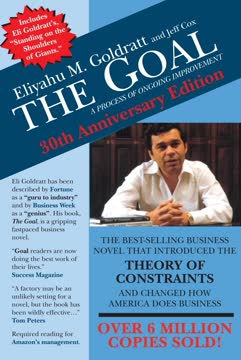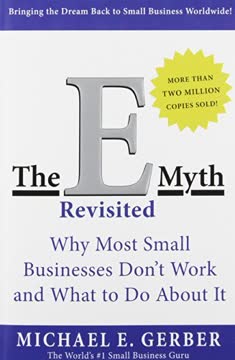つの重要なポイント
1. 注意を引くすべてのものを捕捉する
あなたの心はアイデアを持つためのものであり、それを保持するためのものではない。
すべての未解決事項を収集する。 あなたの精神的な空間を占めているすべてのタスク、約束、アイデアを集める。これには、個人的および職業的な義務が含まれ、大きなプロジェクトから小さな用事までが対象となる。ノートパッド、アプリ、ボイスメモなどの物理的およびデジタルツールを使用して、これらの考えを外部化する。
収集の習慣を作る。 定期的に心の中のすべての内容を空にする。この実践はストレスと精神的な混乱を減らし、本当に重要なことに集中できるようにする。すべてを捕捉することで、精神的な帯域幅を解放し、何も見落とさないようにする。
プロセスを信頼する。 最初は、約束の量に直面することで圧倒されるかもしれない。しかし、すべてを頭から出すことが、コントロールと明確さを得るための最初のステップであることを覚えておいてほしい。捕捉したすべてを実行することを約束するのではなく、その存在を認識するだけでよい。
2. 各項目の望ましい結果と次のアクションを明確にする
前進する秘訣は始めることにある。始める秘訣は、複雑で圧倒されるタスクを小さく管理可能なタスクに分解し、最初の一歩を踏み出すことにある。
明確な結果を定義する。 捕捉した各項目について、「完了」とは何かを決定する。この明確さは、問題について考えるのではなく、望ましい結果を達成することに脳を集中させるのに役立つ。
次のアクションを特定する。 各結果を具体的な物理的アクションに分解する。「これを前進させるために次に取るべきアクションは何か?」と自問する。このステップは、曖昧なアイデアを具体的で実行可能なタスクに変える。
次のアクションの例:
- プロジェクトのタイムラインについてジョンに電話する
- プレゼンテーションのアウトラインを作成する
- 次の旅行のためのフライトオプションを調査する
3. 信頼できるシステムにリマインダーを整理する
あなたの力を生み出す能力は、リラックスする能力に正比例する。
信頼できる組織システムを作成する。 情報を簡単に保存し、取り出せる構造を開発する。これには、タスク管理アプリのようなデジタルツールや、ファイルフォルダーのような物理的なシステムが含まれる。
コンテキストごとに分類する。 タスクを完了できる場所や方法に基づいてグループ化する。一般的なカテゴリには次のようなものがある:
- @コンピュータ
- @電話
- @用事
- @家
- @オフィス
別々のリストを維持する。 異なる種類の項目に対して個別のリストを保持する:
- 次のアクション: 即時の具体的なタスク
- プロジェクト: 複数のステップを含む結果
- 待機中: 他人に委任した項目
- いつか/多分: 将来のアイデア
4. 定期的にシステムを見直し、更新する
より良い感情の方法に行動するのは、行動の方法に感情を持つよりも簡単である。
週次レビューを実施する。 毎週時間を割いてシステムを見直し、更新する。この習慣はリストを最新かつ関連性のあるものに保つ。
週次レビューのプロセス:
- すべての未処理の書類や資料を集める
- メモを処理する
- 過去のカレンダーデータを見直す
- 今後のカレンダーを見直す
- アクションリストを見直す
- プロジェクトリストを見直す
視点を維持する。 この時間を使って、地上レベルのアクションから人生の目標まで、さまざまな視点で約束を評価する。この実践は、日々のタスクを管理しながら、より広範な目標と一致させるのに役立つ。
5. 最も重要なタスクに取り組む
幸運はすべてに影響を与える。常に釣り針を投げておけ。予期しない場所に魚がいるかもしれない。
2分ルールを実行する。 タスクが2分以内に完了する場合は、すぐに実行する。この原則は、小さなタスクが積み重なってシステムを詰まらせるのを防ぐ。
アクションを選択するための4つの基準モデルを使用する:
- コンテキスト: 現在の場所と利用可能なツールを考慮して何ができるか?
- 利用可能な時間: 次の約束までどれくらいの時間があるか?
- 利用可能なエネルギー: どの程度の精神的および物理的エネルギーがあるか?
- 優先順位: 上記の要素を考慮して、最も重要なことは何か?
直感を信じる。 約束と次のアクションの全体像が明確になったら、何に取り組むかを決める際に直感を信じる。未処理の入力で心が混乱していないとき、直感的な選択をすることができる。
6. ストレスのない生産性の技術を習得する
私たちができることは一つあり、最も幸せな人々はそれを限界まで行うことができる人々である。私たちは完全に現在に存在することができる。私たちはここに全てを注ぐことができる。
水のような心を達成する。 準備と柔軟性の状態を目指し、水がどんな容器にも適応するようにする。この心構えは、過剰反応や過小反応することなく、人生が投げかけるものに適切に対応することを可能にする。
精神的な抵抗を排除する。 すべての約束を捕捉し、明確にすることで、未完了のタスクや不明確な義務による微妙なストレスを取り除く。これにより、集中した作業や創造性のための精神的エネルギーが解放される。
結果思考を実践する。 プロジェクトや目標の成功した結果を定期的に視覚化する。この習慣は、望ましい結果に一致する機会や解決策に脳を準備させる。
7. 仕事と生活へのアプローチを変革する
自分が何を考えているかを知るためには、自分が何を言っているかを聞くまでわからない。
時間の管理から焦点の管理へシフトする。 毎日を詰め込もうとするのではなく、注意を効果的に向けることに集中する。このアプローチは、時間だけでなく、エネルギーと注意が重要なリソースであることを認識する。
「次のアクション」マインドセットを受け入れる。 自分自身と周囲の人々に、何かを前進させるために必要な次の物理的で目に見えるアクションを常に特定するように訓練する。この習慣は、先延ばしを防ぎ、プロジェクトを進行させる。
行動へのバイアスを育てる。 小さなタスクに即座に取り組み、大きなプロジェクトの次のステップについて迅速に決定する習慣を身につける。この積極的なアプローチは、勢いと自信を築く。
低抵抗の信頼できるシステムを作成する。 組織システムを非常にシンプルで楽しく使用できるように設計し、自然にそれに従事するようにする。捕捉、明確化、レビューが簡単であればあるほど、システムを維持する可能性が高くなる。
最終更新日:
FAQ
What's "Getting Things Done: The Art of Stress-Free Productivity" about?
- Overview: "Getting Things Done" by David Allen is a guide to organizing tasks and commitments to achieve stress-free productivity. It introduces a system to manage work and life efficiently.
- Main Focus: The book emphasizes capturing all tasks and commitments in a trusted system outside the mind, clarifying actions, and organizing them for review and execution.
- Purpose: It aims to help individuals clear their minds of clutter and focus on completing tasks effectively, providing a structured approach to managing tasks, projects, and responsibilities.
- Target Audience: Ideal for anyone feeling overwhelmed by their workload, from executives to homemakers, offering practical advice to regain control and clarity.
Why should I read "Getting Things Done"?
- Improved Productivity: The book offers practical techniques to enhance productivity by organizing tasks and reducing stress, helping readers focus on what truly matters.
- Stress Reduction: By capturing tasks in a trusted system, it alleviates the mental burden of remembering tasks, leading to a calmer, more focused mind.
- Universal Applicability: The principles can be applied to both personal and professional life, making it a versatile resource for improving organizational skills.
What are the key takeaways of "Getting Things Done"?
- Capture Everything: Collect all tasks, ideas, and commitments in a reliable system to prevent mental clutter and allow for better focus.
- Clarify Actions: Define the next physical action required for each task to prevent procrastination and ensure steady progress.
- Regular Review: Consistent review of tasks and projects is crucial to maintaining control and focus, with a recommended weekly review to update and organize commitments.
How does the GTD system work?
- Five Stages: The GTD system consists of five stages: capture, clarify, organize, reflect, and engage, each designed to help manage tasks efficiently.
- Capture Everything: Collect all tasks, ideas, and commitments in a trusted system outside your head to free up mental space.
- Clarify and Organize: Determine the next action for each task and organize them into appropriate categories for review and execution.
What is the "mind like water" concept in "Getting Things Done"?
- Definition: "Mind like water" is a state of relaxed control where you respond appropriately to any situation without overreacting or underreacting.
- Achieving the State: By capturing, clarifying, and organizing tasks, you can achieve this state, allowing you to focus on the present moment and make better decisions.
- Benefits: This state leads to increased productivity, reduced stress, and a greater sense of well-being, as you are no longer burdened by mental clutter and unfinished tasks.
What is the "Natural Planning Model" in "Getting Things Done"?
- Five Phases: The Natural Planning Model consists of defining purpose and principles, outcome visioning, brainstorming, organizing, and identifying next actions.
- Purpose and Vision: Start by defining the purpose and envisioning the successful outcome of a project, providing direction and motivation.
- Brainstorming and Organizing: Generate ideas and organize them into a coherent plan, identifying the next actions required to move the project forward.
How can "Getting Things Done" help with procrastination?
- Next-Action Clarity: The book emphasizes defining the next physical action required for each task, reducing hesitation and encouraging progress.
- Breaking Tasks into Steps: Allen's method involves breaking down projects into manageable steps, making them less daunting and building momentum.
- Regular Review and Organization: Regular reviews help keep priorities clear and manageable, avoiding the last-minute rush that often results from procrastination.
How does the "two-minute rule" work in "Getting Things Done"?
- Definition of the Rule: If a task can be completed in two minutes or less, it should be done immediately to prevent small tasks from accumulating.
- Application in Daily Life: The rule can be applied to tasks like responding to emails or making quick phone calls, encouraging prompt action.
- Benefits of the Rule: It leads to a significant reduction in clutter and an increase in productivity by quickly clearing minor tasks.
What are some of the best quotes from "Getting Things Done" and what do they mean?
- "Your mind is for having ideas, not holding them." Emphasizes freeing the mind from remembering tasks to enhance creativity and problem-solving.
- "The art of resting the mind..." Highlights the value of achieving a clear mind, free from stress and mental clutter, to enhance productivity and well-being.
- "You can do anything, but not everything." Reminds to prioritize tasks and focus on what truly matters, rather than trying to do everything at once.
How can I implement the GTD system in my daily life?
- Start with Capturing: Begin by collecting all tasks, ideas, and commitments in a trusted system outside your head using tools like notebooks or digital apps.
- Clarify and Organize: Determine the next action for each task and organize them into appropriate categories for review and execution.
- Regular Review: Set aside time each week to review and update your system, ensuring it remains functional and up-to-date.
What tools and systems does "Getting Things Done" recommend for organization?
- In-Baskets and Filing Systems: Use physical or digital in-baskets to capture all incoming tasks and information, and maintain a well-organized filing system.
- Action Lists and Calendars: Maintain action lists categorized by context and use a calendar for time-specific tasks and appointments.
- Digital Tools: Apply GTD principles using modern digital tools like task management apps and digital calendars, integrating them into a cohesive system.
How can "Getting Things Done" be applied in a team or organizational setting?
- Shared Language and Practices: Adopt a shared language and practices for task management, improving communication and collaboration.
- Accountability and Clarity: Define next actions and outcomes clearly to enhance accountability and avoid misunderstandings within a team.
- Cultural Shift: Promote a focus on productivity and efficiency, reducing stress and improving task management for better results and a positive work environment.
レビュー
本書『Getting Things Done』は、その実践的な生産性システムに対して主に好意的な評価を受けている。多くの読者はその方法が人生を変えると称賛し、タスクの整理、心の中の雑念の除去、ストレスの軽減に役立つと感じている。本書が強調するアイデアのキャプチャ、受信トレイの処理、次のアクションの特定は、多くの人々に共鳴している。一部の人々は、その企業向けの焦点や時代遅れの要素を批判し、また他の人々は本書が不必要に長く、繰り返しが多いと感じている。それでもなお、読者は実行可能なアドバイスを高く評価し、GTDシステムを実践した後の効率の向上と精神的な明瞭さを報告している。
Similar Books

















